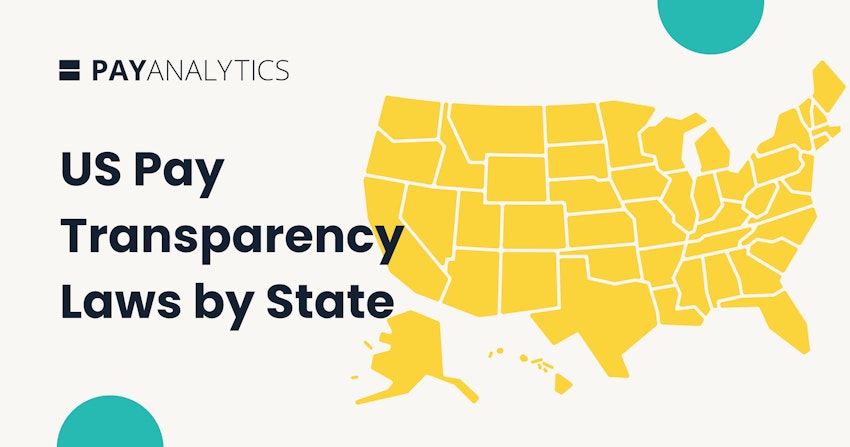Fairness in the workplace has concrete payoffs
The COVID-19 pandemic has disrupted the job market in ways few employers expected. After an initial economic downturn, 2021 saw a record high number of employees leaving their jobs voluntarily. At the peak of this ongoing “Great Resignation,” there were about 1.7 posted job opportunities for every unemployed worker.
Studies have indicated that most employees who quit do so because they feel that they are not being paid enough. Many see a lack of opportunities for advancement and feel devalued by their employers. So employers are now feeling the need to offer more competitive compensation – while also urgently trying to hold on to existing talent.

It’s no surprise that many companies are rethinking their recruitment and retention strategies, or that this often leads them to adopt fair pay practices, like giving raises to underpaid employees, closing gender pay gaps, and moving towards pay transparency. Such fairness in the workplace has concrete payoffs. For instance, pay transparency has been shown to increase job satisfaction among current employees and provide an improved return on advertising expenses for open positions. And it’s intuitive that pay equity action can help in retaining talent – if a workplace makes a genuine effort to close its gender pay gap, female employees are more likely to stick around.
However, many employers also see that implementing fair pay practices can be risky. One major risk is pay compression, which is a narrowing of the salary range. Pay compression can happen in a number of ways. For example, a company desperately focused on attracting talent might offer starting salaries that are too close to the salaries of current workers. Or it might recruit or retain hourly workers by offering overtime pay, and those workers might earn more than their salaried supervisor. It might change its pay structure so that job tenure is no longer a major factor in salary or it no longer offers merit pay. Or it might give annual raises that don’t keep pace with inflation. In all of these cases, experienced and/or high-performing employees are at the greatest risk of feeling undervalued and potentially leaving.
In any of these cases, pay transparency can amplify the risk – in fact, it’s only in a relatively transparent workplace that employees would know what their colleagues make. And if there is underlying inequity in the pay structure, pay transparency only makes it more visible. Even if there is no pay compression or inequity, in a newly transparent workplace employees might feel upset or confused when they compare their pay to others’. (Indeed, the notion that employees should be kept in the dark in order to prevent such hurt feelings has played a major role in establishing the norm of pay secrecy.)
So what’s an employer to do? How can a company offer the competitive salaries needed to attract talent while ensuring that current employees aren’t left behind? And how can employers communicate to employees that their loyalty and talent are valued?
We’ve seen many companies effectively use fair pay practices to address all of these needs. Here’s how they do it.
Ensure fair compensation structure by conducting a pay equity analysis
The good news about pay compression is that it can be predicted by modeling the current pay structure and considering the proposed salaries for new hires. This fits well into the process of a larger pay equity analysis. As a whole, this analysis will show you what salary ranges and individual salaries need to be adjusted – not only to avoid compression from new hires, but to make the whole pay structure more equitable and thus improve retention. (If this is your company’s first pay equity analysis, check out this article on getting started.)
A pay equity analysis will also give you the opportunity to make sure your company’s pay structure really reflects what your organization values. What employee factors are important to you – skills, experience, performance? How will those factors be measured, quantified, and reflected in employees’ pay? This is also the time to make sure that your company’s pay structure lines up with the market and that you have a clear plan for maintaining it over time. For instance, will you do an annual cost of living increase? Will it be the same percentage for everyone, vary based on performance, or come in the form of an annual bonus?
Moving forward, your pay structure should be reviewed regularly, both to make sure it’s in line with the market and to make sure it remains equitable.
Improve employee tenure by listening to employees and offering what they need and want
Fair compensation is crucial – but it’s not the whole picture. Non-salary compensation or even non-monetary incentives can make a key difference in the way employees feel about their job and their employer.
However, not all such incentives are equally valued by all employees. For instance, within some company cultures, people are best motivated by performance bonuses, while in others, employees crave location and scheduling flexibility. To find out what might work for your workforce, you can conduct conversations, surveys, or both.
Here are some especially valuable types of non-salary compensation:
- Long-term incentives, such as bonuses, additional paid time off, stock options, or tuition reimbursement, can support job tenure.
- Training has been shown to make employees feel valued not only in their current job, but as a whole person. It also leads to more equal opportunities within the organization for women and other demographic minorities (i.e., it builds workplace equity). Although it’s certainly possible that employees may take this training and use it to get another job elsewhere, it’s also possible that they can use it to move within the organization to a job role that they find more fulfilling.
- Mentorships and other development opportunities also build employee engagement.
- In the U.S., employees who have quit as part of the Great Resignation often cite childcare issues, inadequate health insurance, and insufficient time off. Going beyond the minimal federal and local mandates and offering more support in these vital areas can go a long way in retaining employees.
- Recent surveys show that flexibility is especially important to workers, particularly after the early-pandemic lockdowns demonstrated that in-office presence and rigid schedules are unnecessary for many jobs.
- Mental health benefits, family caregiving support, and financial planning services can all aid employees’ work-life balance.
If your journey towards pay equity can’t take place in a single year and you are phasing in salary increases gradually, beginning to meet your employees’ non-salary needs will help signal to them that they really are valued. These incentives can be viewed and communicated as part of your overall compensation structure and pay philosophy.
Develop clear communication about pay


As your organization changes its pay structure or moves towards pay transparency, employees will almost certainly have questions – and sometimes they’ll lead to challenging conversations. However, if your company has put in the work to create an equitable, thoughtful, and clear pay structure, then you have the foundation you need.
Make sure to offer support and training to managers and supervisors so that they thoroughly understand the new pay structures and policies. They also need to be prepared to explain to any team member why their pay is what it is and how they can move up within the pay scale.
You can also create a couple different types of documents. These should be integrated into your organization-wide conversations about pay structure changes or pay transparency.
- A total compensation statement. This includes all base pay, standard benefits, plus all the non-salary compensation types described in the previous section. This shows current employees or potential new hires at a glance what they are getting from the organization.
- A pay philosophy. This is a more general statement that can include the following:
- What the organization values
- How it sets its compensation strategy (for example, “We strive to be a pay leader and will base our salaries on the top 20% most competitive firms in our field”)
- Ongoing pay commitments to employees over time (for example, “We provide an annual cost of living increase for all employees commensurate with the annual rate of inflation”)
How PayAnalytics can help
PayAnalytics not only identifies and corrects demographic pay disparities, but it provides a holistic view of your company’s salary structure. Our software solution can help you see where employees may be underpaid or where there might be a risk of salary compression.
If your organization is looking at fair pay practices as a way to minimize employee attrition, two PayAnalytics features may be especially helpful. The Compensation Assistant suggests salaries for proposed new hires and shows the salaries of similar employees within the company, which can help you strike the right balance for starting salaries and prevent compression. The Workplace Equity feature analyzes current workforce diversity, allowing you to spot any areas where there may be unequal access to opportunity – and then address those areas to improve employee retention.
We’d be happy to talk with you about your organization’s needs, walk you through these features, and show how they can help you attract and keep top talent. Book a live demo with us today!





